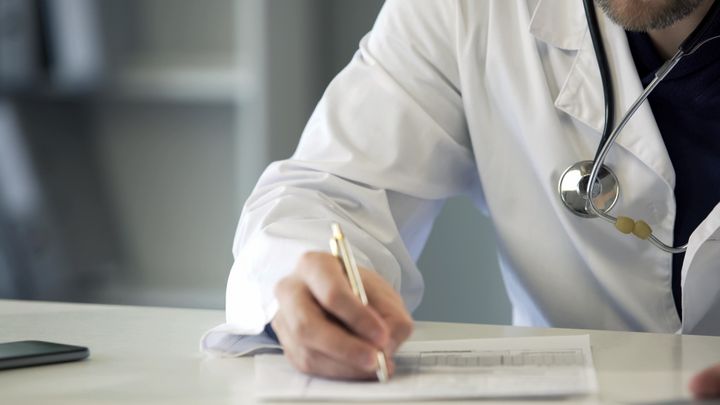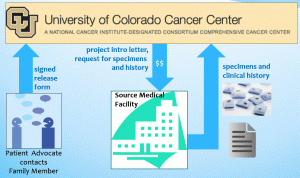
This Photo by Unknown Author is licensed under CC BY-SA-NC
In the age of COVID-19, patients may find themselves in a hospital or emergency department that does not have enough resources to give ICU beds or ventilators to all patients who need them. In an attempt to prepare for such a situation, some hospitals drafted “triage” policies that state who would be prioritized to receive a ventilator or ICU bed.
I want to share my perspective on triage as a both a science geek and a metastatic lung cancer patient in active treatment.
A not-yet-implemented triage policy from the Henry Ford Healthcare System in Michigan was shared online in late March, and caused an uproar in social media. The metastatic cancer community learned that if resources were limited and that policy were in force, they would be denied a ventilator, along with those who had severe heart, lung, kidney or liver failure, or severe trauma or burns. Over the next several days, other triage policies surfaced (some that included dementia or disability as a reason to deny care). Articles about triage policy appeared in medical journals, opinion pieces, and general media.
Many of my fellow lung cancer patients are horrified by the impact such triage policies would have on their lives. I too am worried about the possibility of not receiving treatment simply because I have metastatic lung cancer.
The lung cancer community has been battling treatment nihilism for years. It angers us—and rightly so—whenever we hear that someone did not receive the most effective treatment available simply because a doctor was unaware of changing statistics in lung cancer survival or the terrific response rate to targeted therapy or immune checkpoint inhibitors.
But this triage thing is not a matter of doctors being unaware of changes in lung cancer treatment, or not believing cancer patients deserve to live. This is an issue of resource shortages. Everyone deserves to live, but emotional pleas don’t give doctors a way to make a fair choice about who lives and who dies.
Reality check: COVID-19 is redesigning hospital services out of necessity. Surgery theaters are being converted to ICUs. Hospital staffing is being reduced in an attempt to keep healthcare workers healthy and sane. Ventilators are in short supply. When two patients need a ventilator-equipped ICU bed (whether they suffer from severe COVID-19 pneumonia or a heart attack), and only one bed or ventilator is available, someone will have to decide who gets the scarce resource. The patient who gets it will hopefully live. The patient who doesn’t will probably die. It’s a horrible Sophie’s Choice for healthcare providers who took the hippocratic oath.
This is not a human rights violation. It’s a medical ethics problem born of resource shortages. How should the medical world decide who lives and who dies? Obviously, no one wants to hear that they are the one who will likely die. But simply saying everyone has an equal right to life does not solve the resource problem. We need a fair way to make a gut wrenching, impossible decision.
How can we make a fair decision? One possibility is to assess who is most likely to survive if they were given the respirator. The problem is, we don’t have much data to use in making this assessment. We have some data that cancer patients who get really sick with COVID-19 are less likely to survive, but only a few of those had lung cancer, so it’s not a good sample size on which to base a decision. We have some data that shows people who are 80+ years old are unlikely to survive COVID-19 once their disease has progressed to the point of needing a ventilator. Thus one could say that when having to choose between a 20-year-old and an 80-year-old, all other things being equal, the younger patient has a better chance of survival and so gets the ventilator. But what if the younger patient has metastatic pancreatic cancer and no cancer treatment is likely to work for them? Then the choice isn’t so easy.
The US healthcare system—certainly most healthcare providers—have never faced these sorts of decisions before. They need time to figure it out. Hospitals are attempting to create triage policies so that individual doctors are not continually faced with violating their Hippocratic Oath by deciding who lives and who dies. Our healthcare providers are already under tremendous pressure by long hours, patient overload, watching patients die alone without being able to offer a comforting touch, being repeatedly exposed to COVID-19 due to lack of personal protective equipment, and separation from their families to avoid infecting their loved ones. They could use some guidelines.
In the March 28 Axiom Zoom webinar on “COVID-19 and the Impact on Thoracic Oncology” (recording available here), I asked the the assembled thoracic oncology experts what they tell their lung cancer patients (especially those with metastatic disease) who are scared that they will be denied treatment simply because of their lung cancer diagnosis. The doctors acknowledged that they too were concerned about this. One surgeon emphasized that doctors must continue advocating for their lung cancer patients to fight the historic nihilism faced by lung cancer patients. Another stated the importance of informing all critical care team members about the improved prognosis for lung cancer patients so that they wouldn’t be automatically left untreated. But no one had a solution that would solve the problem as a whole.
In the follow-up Axiom webinar on April 4 titled “COVID-19 and The Impact on Cancer Patients” (recording available soon), the doctors addressed the topic again. One doctor said she wrote a clinic note for each cancer patient, which the patient could download online and print to keep with them. She didn’t elaborate on the contents of the note, but presumably, the note listed the patient’s diagnosis, treatment and prognosis.
This raises another ethics issue. What if that patient has a poor prognosis? What if that patient doesn’t WANT to know their prognosis? What if the patient is in a clinical trial and the doctor doesn’t know their prognosis?
While some lung cancer patients (such as myself) have had long runs with no evidence of disease on targeted therapy or immunotherapy, there are still many for whom prognosis is not so rosy: Patients who have extensive small cell lung cancer that has progressed after chemo. Patients who have oncogene-driven lung cancers and have blown through all their treatment options. Patients whose cancer is progressing rapidly despite immunotherapy. Patients, advocates, and advocacy organizations won’t have any credibility if we claim that all lung cancer patients have the same likelihood of surviving a severe case of COVID-19 as a healthy person.
Lung cancer patients are not the only group facing discrimination via triage. This also affects people with disabilities, elders with dementia, children with heart issues, diabetics on insulin, and many others. I don’t feel right saying lung cancer patients deserve a chance to live, but these other people don’t. I support the statement published by the Disability Rights Education & Defense Fund (DREDF), The ARC of the United States, and many other disease and disability advocacy organizations (including the GO2 Foundation for Lung Cancer and LUNGevity Foundation) titled “Applying HHS’S Guidance For States and Health Care Providers on Avoiding Disability-Based Discrimination in Treatment Rationing.” This is the sort of reasoned ethics discussion needed to help the medical community develop guidance on this tough topic.
Speaking as a member of a special interest group (metastatic lung cancer patients), this is a time to search for solutions that are right for EVERYONE, not just for one special interest group. I don’t think my right to live outweighs anyone else’s right to live. Ethically, when resources are limited, decisions on who gets care should be based on who has the better chance of survival based on available facts. This is a very sensitive issue that could have a significant impact on how patients AND the medical community view lung cancer advocacy organizations.
I prefer to seek solutions to problems that work for the community as a whole. News flash: we are ALL going to die someday–and none of us know when. Patients living with advanced and metastatic lung cancer have become experts on living well despite uncertainty. You can take some steps to make the uncertainty easier for you and those you love.
- Identify which events or activities make your life worth living. Is it walking in the woods every day? Visiting distant family? Watching your youngest child graduate from kindergarten? Having lunch with a good friend? Indulging a good book? Petting the cat? Write all of them down, and then make plans to help them happen.
- Have an honest discussion with your doctor about your health status, goals of care (see #1), and prognosis. Ask if you are immunocompromised, have scarred lungs or limited breathing capacity, or are at risk of complications if put on a ventilator. Be honest about your fears and your health challenges.
- Ask your doctor to provide you with a BRIEF letter (2-3 sentences at most) on letterhead, signed and dated, stating your diagnosis and prognosis. Carry a copy with you in case you must go to the hospital. (It must be brief, or no ED doc will read it).
- Think about how you would prefer the end of life to look. Talk with your family NOW about your preferences–if disaster strikes, you might not have another chance. If you need help getting started, visit The Conversation Project.
- Prepare legal estate documents, especially a Durable Power of Attorney and Advanced Healthcare Directive. Learn more from the National Institute on Aging. There are ways to do this even if you are Sheltering at Home during the pandemic–check out “Estate Planning Goes Digital as Many Families Explore Options.”
We can’t control the COVID-19 pandemic, lung cancer, or medical resource shortages. However, we CAN control how we react to them. Prepare. Stay home. Practice social distancing. Wash your hands. And stay as healthy as you can.













